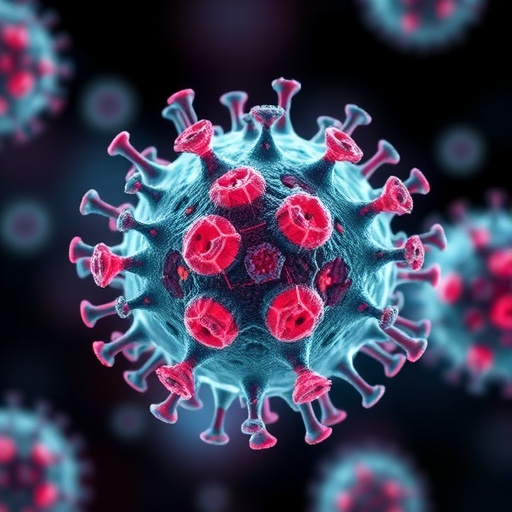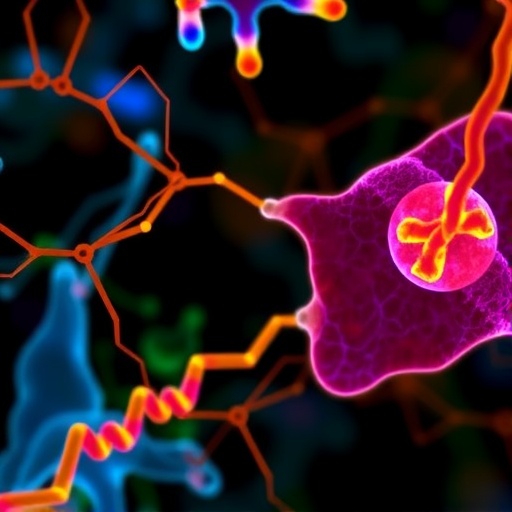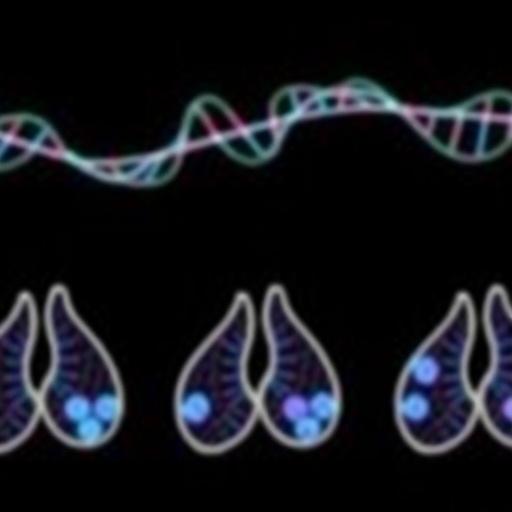
Researchers at Columbia Engineering have pioneered a groundbreaking cancer therapy that harnesses the synergistic power of bacteria and viruses working in concert. This innovative approach, detailed in a recent publication in Nature Biomedical Engineering, introduces a novel delivery system wherein a tumor-targeting bacterium conceals a therapeutic virus, effectively bypassing the immune system and unleashing a potent oncolytic assault directly within cancerous tumors. The approach, termed CAPPSID (Coordinated Activity of Prokaryote and Picornavirus for Safe Intracellular Delivery), exemplifies an unprecedented cooperation between two distinct microbial agents purposely engineered to overcome longstanding challenges in cancer treatment.
At the core of this system is a strain of Salmonella typhimurium, a bacterium renowned for its innate ability to home in on hypoxic, nutrient-rich tumor microenvironments. Leveraging this natural homing instinct, the research team has engineered the bacteria to transport a picornavirus stealthily into solid tumors. Once inside the tumor’s interior, the bacteria invade cancerous cells and undergo programmed lysis, releasing the viral RNA payload precisely where it is most effective. This clever Trojan horse strategy not only ensures precise localization of the virus but also maximizes its oncolytic potential by circumventing systemic immune defenses that commonly neutralize free viruses in circulation.
One of the critical impediments to effective oncolytic viral therapy is the host immune system’s pre-existing immunity to common viruses, which often results in rapid neutralization of therapeutic viruses before they reach tumor sites. The CAPPSID platform ingeniously addresses this limitation by using bacteria as protective carriers. These bacteria cloak the virus from neutralizing antibodies encountered in the bloodstream, allowing the viral payload to reach the tumor intact. This mechanism promises to extend the clinical applicability of viral therapies to patients who have pre-existing immunity, a patient population that has historically presented significant challenges for oncolytic virus therapeutics.
.adsslot_hJpqiH5b20{width:728px !important;height:90px !important;}
@media(max-width:1199px){ .adsslot_hJpqiH5b20{width:468px !important;height:60px !important;}
}
@media(max-width:767px){ .adsslot_hJpqiH5b20{width:320px !important;height:50px !important;}
}
ADVERTISEMENT
The engineered bacteria-virus consortium creates a sophisticated interdependent system. The virus’s replication and maturation processes are engineered to rely on a specific bacterial enzyme—a protease—that is exclusively present within the tumor environment where the engineered bacteria reside. This molecular dependency restricts viral propagation to the vicinity of the tumor, effectively locking viral replication to the tumor microenvironment and preventing deleterious spread to healthy tissues. This safety mechanism is a substantial advancement in addressing concerns about off-target infection and systemic toxicity that have hindered past approaches using live viruses in cancer therapy.
In vitro studies and mouse model experiments conducted by the Synthetic Biological Systems Lab have demonstrated the feasibility and efficacy of this dual-organism therapeutic platform. Microscopic imaging vividly illustrates the interplay, revealing Salmonella cells (stained magenta) infiltrating cancerous small cell lung carcinoma cells (grey), while the engineered picornavirus (depicted in cyan) radiates outward in a circular pattern as it propagates from the initial locus of infection. These results highlight the capacity for the system to permeate tumors and deliver a localized, amplified oncolytic effect with precise spatial control.
The interdisciplinary collaboration was led by Tal Danino, associate professor of biomedical engineering at Columbia Engineering, with vital contributions from virologist Charles M. Rice of The Rockefeller University. Their convergence of expertise in bacterial engineering and synthetic virology enabled the meticulous design of the CAPPSID system to balance therapeutic potency with safeguards that mitigate risks associated with live microbial therapies. The partnership exemplifies a new paradigm in cancer treatment research, focusing on engineering multi-organism therapies rather than single-agent interventions.
Beyond its therapeutic potential, the CAPPSID platform represents an adaptable scaffold for future development. The research team is actively pursuing extensions of this technology across a diverse array of tumor types, utilizing different viral vectors and bacterial strains to optimize efficacy and safety profiles. Their vision includes assembling a modular toolkit of engineered viruses capable of sensing intracellular environments and responding with bespoke therapeutic payloads. Moreover, by integrating bacterial strains already proven safe in clinical trials, the team aims to facilitate translational pathways that bring this promising therapy closer to human application.
A notable advantage of this system is its potential to overcome the challenges posed by tumor heterogeneity and physical barriers within solid malignancies. The combination of bacterial tropism and viral replication capacity enables deep penetration and widespread viral dissemination throughout tumors, a feat difficult to achieve with either bacteria or viruses alone. This dual delivery methodology could markedly improve therapeutic indices and reduce the chance of therapeutic resistance by promoting a multifaceted oncolytic effect.
Ensuring patient safety in therapies involving live microorganisms is paramount. CAPPSID’s unique safeguard—the requirement for a bacterial protease to activate viral maturation—adds a critical layer of biological containment. By tying viral life cycle progression to bacterial presence, the therapy effectively quarantines viral proliferation within the tumor microenvironment. This engineered dependency may serve as a blueprint for future microbiome-based therapies where tight spatial and functional control is essential.
The promising preclinical results position CAPPSID at the forefront of synthetic biology applications in oncology. As the research progresses from bench to bedside, rigorous clinical trials will be necessary to evaluate safety, dosing strategies, and therapeutic efficacy in human patients. The team’s commitment to clinical translation emphasizes the potential of living medicines that harness engineered microbial consortia to revolutionize cancer treatment paradigms.
In conjunction with advancing therapeutic design, the research group has filed a patent application to protect intellectual property surrounding their novel bacteria-virus system. Their work signals a transformative step toward realizing living therapies that orchestrate complex, cooperative interactions between multiple microorganisms to achieve precision targeting and controlled therapeutic action within cancerous tissues. This innovation may well herald a new era in bioengineered cancer therapeutics where the convergence of microbiology, synthetic biology, and oncology delivers unprecedented clinical outcomes.
With growing interest in oncolytic viruses and bacterial therapies independently, CAPPSID offers a trailblazing strategy that maximizes the intrinsic strengths of both modalities. As research evolves, it holds promise not only for improved treatment of solid tumors but also for the broader design of multi-microbial systems capable of tackling complex diseases. This synergy between engineered prokaryotes and viruses represents a bold leap forward in biomedical engineering, potentially overcoming key limitations that have constrained previous monotherapies.
Subject of Research: Engineered bacteria and viruses cooperating for targeted cancer therapy
Article Title: Engineered bacteria launch and control an oncolytic virus
News Publication Date: 15-Aug-2025
Web References:
https://www.nature.com/articles/s41551-025-01476-8
http://daninolab.nyc
https://www.engineering.columbia.edu/faculty-staff/directory/tal-danino
https://www.bme.columbia.edu/
https://www.cancer.columbia.edu
https://www.cuimc.columbia.edu
https://datascience.columbia.edu
Image Credits: Danino Lab
Keywords: Biomedical engineering, oncolytic virus therapy, synthetic biology, bacterial cancer therapy, tumor targeting, Salmonella typhimurium, viral delivery systems, cancer treatment innovation
Tags: bacteria-based cancer therapyCAPPSID technologyengineered microbial agents for cancerimmune system evasion in cancer therapyinnovative cancer treatment strategiesoncolytic virus delivery systemovercoming challenges in cancer treatmentSalmonella typhimurium in cancer treatmentsynergistic bacterial and viral therapytargeted treatment of solid tumorstherapeutic virus concealmenttumor-targeting bacterium





